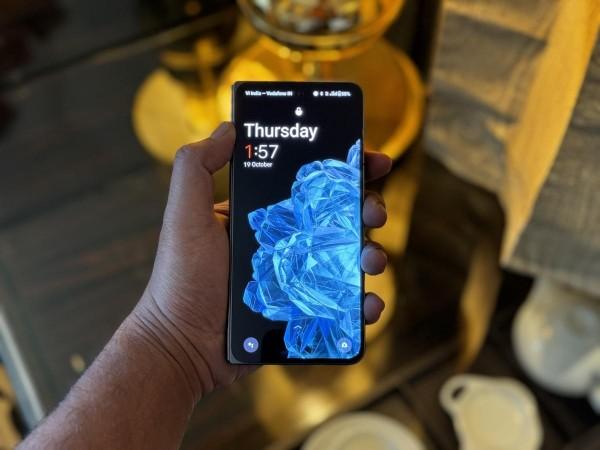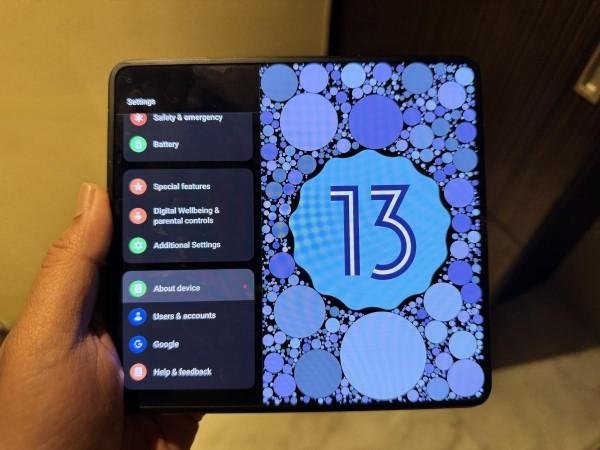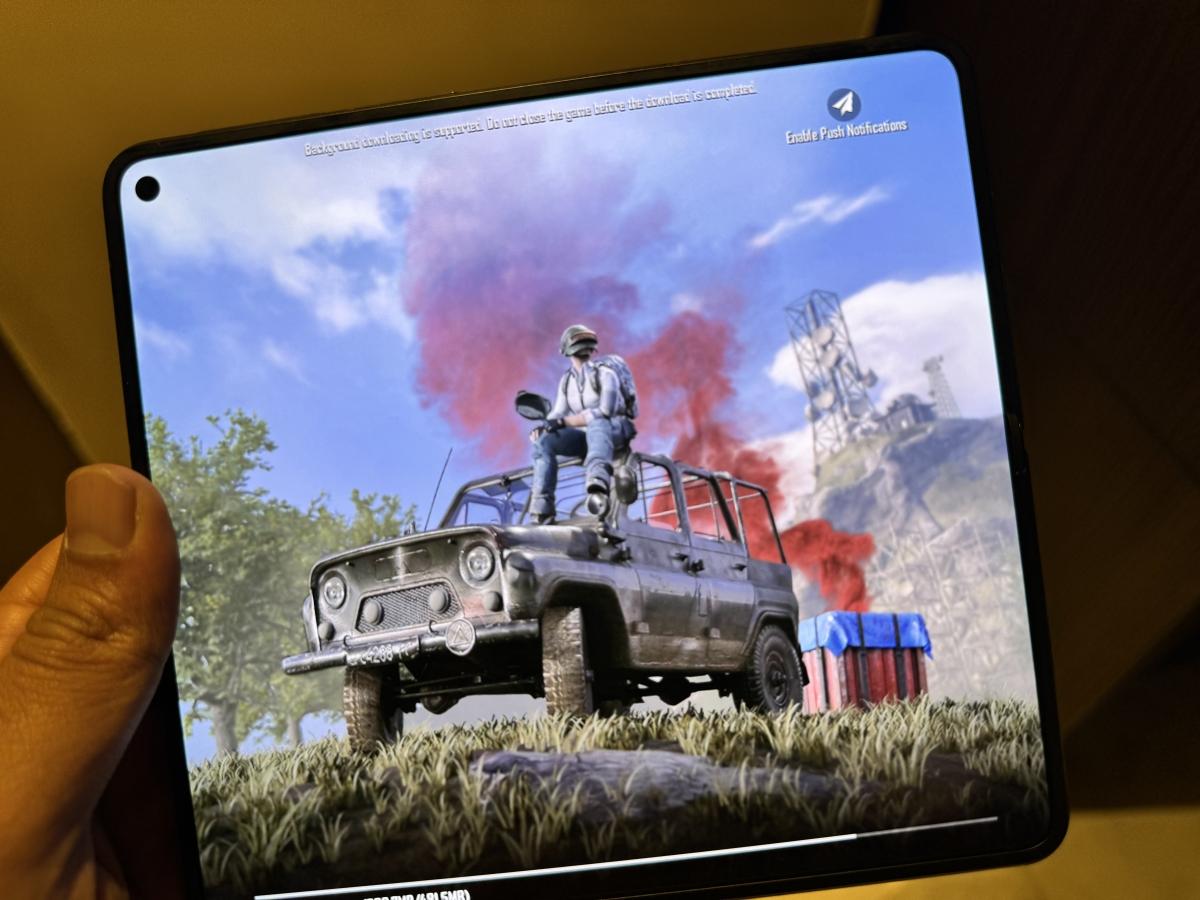As we reminisce about the iconic OnePlus One and the exclusivity of its limited invites, a decade has quietly passed. In this span, OnePlus has continually impressed with its stellar device lineup. Just when it seemed that OnePlus had reached the pinnacle of innovation, along comes the OnePlus Open, challenging that notion. Elevating the flagship competition to new heights, this foldable smartphone brings a hybrid experience that doesn’t always demand unfolding for certain tasks, adding a practical touch to real-world usage.
While Samsung has been leading the foldable race, OnePlus has made a bold entrance with the OnePlus Open. The smartphone achieved remarkable sales across multiple channels on its open sale day, securing its position as the top-selling foldable smartphone on its debut.
Several factors contribute to the success of OnePlus Open. Priced at Rs. 139,999, this foldable powerhouse excels both on paper and in practical use. The device earned certification for reliable folding from the renowned international institute TUV Rheinland, subjected to rigorous environmental tests and an astonishing 1,000,000 test-folds—equivalent to over 100 folds per day for a decade. This durability is attributed to the single-spine hinge architecture, making the OnePlus Open an ideal choice for anyone stepping into the foldable smartphone realm.
Let’s delve deeper into the features that shine and those that might leave you contemplating, ensuring you can make an informed decision. But first…
Key specs:
- Main display: 7.82″ 2K Flexi-fluid AMOLED with LTPO 3.0, 120Hz
- Cover display: 6.31″ 2K Super Fluid AMOLED with LTPO 3.0, 120Hz
- Camera: 48MP + 64MP (telephoto) + 48MP (ultrawide)
- Front camera: 32MP (cover), 20MP (main display)
- CPU: Snapdragon 8 Gen 2
- OS: Android 13-based OxygenOS 13.2
- RAM: 16GB DDR5X
- Storage: 512GB UFS 4.0
- Battery: 4805mAh with 67W SUPERVOOC
- Weight: 245g
- Add-ons: eSIM, side-mounted fingerprint sensor, HDR10+, Dolby Vision
Note: OnePlus sent us the Voyager Black OnePlus Open for review. The device runs Android 13-based OxygenOS 13.2.
Let’s move on…
Review in a minute
OnePlus Open emerges as a strong contender in the foldable smartphone market, seamlessly blending a hybrid design for both phone and tablet experiences. With no noticeable crease, exceptional performance powered by the Snapdragon 8 Gen 2 chip, and an innovative camera system, it marks an impressive debut in OnePlus’s foldable lineup. The Open Canvas multitasking system adds a layer of versatility, making it stand out in the foldable arena.
OnePlus Open delivers a mature and well-balanced fusion of smartphone and tablet functionalities. While concerns about water resistance and software support duration exist, its innovative design, high performance, and feature-rich camera system make it a compelling choice for those entering the foldable smartphone market. A promising start to OnePlus’s venture into foldables.
Designed to impress
OnePlus has carefully crafted the Open for everyday use, with the emphasis on the cover display. In the folded state, OnePlus Open has a phone-like exterior with a 6.31-inch outside screen, closely resembling a traditional flat phone. The cover screen’s aspect ratio reminds of Pixel Fold, but OnePlus engineering makes it both visually appealing and sleek. Impressively, it’s only 3mm thicker than a regular OnePlus device, avoiding the bulkiness seen in other foldables. The minimalistic design, except for the prominent camera bump, adds to its sleek profile.

The cover screen is good for most operations. From typing messages to watching content and even playing some casual games, there were no issues whatsoever. At no point did we have to cramp into the tight spaces of what could otherwise be a narrow display.

The hinge of the OnePlus Open uses a single-spine architecture, making the folding and unfolding mechanisms sturdier and durable without any wobbly feeling. The display is protected by Ceramic Guard, which adds to the device’s durability, but there’s no waterproofing. The device gets IPX4 rating, but what OnePlus did here is pretty smart. Since the display can be shut without a gap in the hinge, there’s no way dust can sweep in. It’s been a month, and not once we had to wipe of fine dust particles from the main display. But that’s not even the best part. OnePlus has a system in place to drain small amounts of water particles if and when it makes it to the inside of the phone. This is quite smart really.

Upon unfolding the device like a book, there’s a nearly-square 7.82-inch inside screen which takes center stage, ideal for applications that demand larger screen real estate but less accommodating for widescreen content. The display quality is next to best, offering sharpness, brightness, and a smooth 120Hz refresh rate. It achieves a peak brightness of 2,600 nits, supports 10-bit color depth, and boasts an impressive 426 pixels-per-inch sharpness. It’s the brightest compared to any foldable in the market. Notably, the crease at the folding point is minimal, almost invisible to the eye and touch.

The foldable aspect of the phone is a large part of the design. But the beauty lies in the details. The massive camera bump on the back may be a key attraction, the faux leather back covering the rest of the back panel is my favourite. The flat aluminium frame adds to the aesthetics. All the physical buttons are on the right in the folded state. The volume and power button are sturdy and within easy reach. The power button also doubles as the fingerprint sensor, which worked flawlessly. There’s also the iconic Alert Slider with textured finish so you can easily access and slide it up or down between ring, silent and vibrate models. But one thing I noticed and most guys would relate is when you’re putting your phone back into your jeans pocket, the slider may accidentally change to silent or ring. If it is the former, you’re going to miss a lot of calls. For this reason, the phone case that comes in the box is recommended to be used.

The USB Type-C port takes its usual spot at the bottom, but I like the strategically placed speakers—two at the bottom and two at the top—which makes for really good surround sound. Even when the phone is opened, the speakers continue to do their magic.

I feel OnePlus has got the design just about right in its first attempt at foldable. This is a great start. Knowing OnePlus, things will evolve from here on, and it’s exciting to see what comes next. Until then, the OnePlus Open is a great-looking foldable that feels great in hand. It is sleek, light, and handy. The displays are fantastic and suitable for any task you throw at it.
Camera is full of surprises
The standout feature of the OnePlus Open is its camera setup housed in a massive bump on the back. It packs a 48MP main, 48MP ultrawide, and 64MP telephoto camera with a 3x optical zoom, With this, the device positions itself as a strong contender in the foldable camera market.
The main camera takes the spotlight as it managed to capture detail and handle mixed lighting scenarios effectively. The ultra-wide lens is decent, but the telephoto camera is remarkable at both 3x and 6x zoom levels. The digital zoom is nothing special, but being able to shoot the moon is pretty slick. Things get tricky while shooting in dim lighting, especially when there’s a lot of motion in the frame.

The camera impresses with vibrant colors and excellent dynamic range. The 64MP telephoto camera, offering 3x optical zoom and 6x in-sensor zoom, delivers great results. But if you don’t have steady hands, handheld shooting can be challenging when magnified.
The periscope zoom, along with the 2x zoom, gives multiple focal lengths with detailed and balanced results. The portrait mode offers adjustable blur strength but may struggle with finer details. With a soft bokeh, you can get layered depth effect in portraits. Even in ambient lighting, the portraits came out pretty nice.
Of the three lenses, the ultra-wide-camera seems to struggle in low light the most. But in good lighting, even the ultrawide mode worked quite well in capturing dramatic shots.
OnePlus Open’s selfie camera, both on the cover screen and internal display, offers decent performance. But why use the selfie camera when the main camera can be used to click selfies. Just open the phone and enable the cover screen from the main screen’s camera viewfinder. This added flexibility of using the main camera delivers superior selfie results.
Check out some of the samples below:
1/
Performance: OnePlus being OnePlus
Under the hood, the OnePlus Open is powered by a Snapdragon 8 Gen 2 processor, paired with a whopping 16GB of RAM and a generous 512GB of UFS 4.0 storage. This is an ideal flagship configuration, one that makes OnePlus Open match the capabilities of top-tier Android devices. Having used the phone as a primary device for weeks now, it is safe to say that the phone’s optimal performance allows for multitasking with ease, and the software optimisation is done wonderfully to ensure seamless interactions. From running multiple apps to navigating between daily tasks (includes gaming, streaming, browsing, etc.), the OnePlus Open delivered next-level performance.
1/
OnePlus Open’s software enhances multitasking with its Open Canvas system. It’s like nothing I’ve experienced before and by far the best execution in the foldable arena.
The main display is ideal for multitasking. You can have three side-by-side apps, swiping one off the screen and bringing it back as needed, which I found more practical than floating windows. Additionally, you can also arrange apps in various configurations, such as three side-by-side windows or two side-by-side with a larger horizontal window at the bottom. Finally, the desktop-like taskbar ensures convenient access to recently or frequently used apps.
1/
To make the Open future-proof, OnePlus promises four years of Android updates and five years of security updates, falling slightly short of industry leaders like Google. However, it remains a competitive offering for users looking for regular updates and support.

OnePlus Open strikes a balance between raw performance and intelligent software optimizations, ensuring a seamless user experience.
Battery
OnePlus Open is fuelled by a 4805mAh battery and supports blazing-fast 67W SUPERVOOC charging via a USB Type C 3.1 port. It’s worth noting that OnePlus includes an 80W power adapter in the box, but charging maxes out at 67W. Battery performance has always been OnePlus’ strong suit and that continues with the Open.
OnePlus Open can easily last a day with mixed to heavy use. For instance, using the phone for calls, a lot of IMs and emails, browsing and gaming and streaming in between can still spare some charge at the end of the day. My favourite part remains the charging, which is by far the fastest in any foldable in India, considering the limited options available. In a matter of just 30 minutes, you’ll easily get 80% charge and a full top-up can be done in less than one hour.

Fast charging paired with a reliable battery life, OnePlus Open can address any battery woes. To achieve that, OnePlus used a really efficient chipset, and the display doesn’t exhaust energy at the expense of higher refresh rate, thanks to the adaptive tech.
Verdict
The OnePlus Open is as a formidable contender in the foldable market, offering a well-balanced fusion of smartphone and tablet. Its design innovation, coupled with high performance and an impressive camera system, positions it as a mature product despite it being the first such model from OnePlus stable. However, concerns regarding durability, limited water resistance, and a shorter software support period could impact its long-term appeal. But what a start to the foldable race!
Pros:
- Hybrid design seamlessly transitions between phone and tablet.
- No crease.
- Exceptional performance and battery life.
- Competent camera system with innovative features.
- Open Canvas is brilliant
Cons:
- Limited water resistance
- Ultrawide camera struggles in low light
- Square aspect ratio optimisation in some apps

![OnePlus Open shines bright, towering above competitors in world of foldables [Review] OnePlus Open shines bright, towering above competitors in world of foldables [Review]](https://data1.ibtimes.co.in/en/full/793508/oneplus-open-review.png)





























